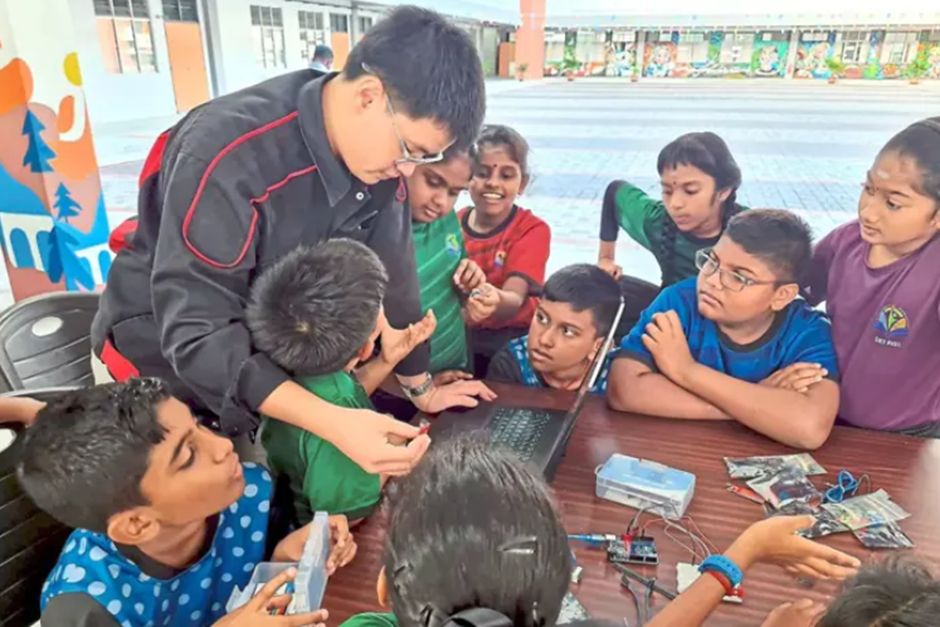Breakthrough Robotics System to Tackle the World’s Most Hazardous Environments
- Automate Asia Magazine

- Sep 6, 2021
- 3 min read

A consortium of leading UK businesses and academics today announces the launch of Connect-R – a world-first modular robot specifically designed to undertake missions and build emergency structures in the most hazardous environments on the planet.
Connect-R is an industrial-scale, self-building robotic structure for use in unsafe working conditions, where environmental radioactivity, a lack of a breathable atmosphere or concerns over structural integrity significantly increase the risks posed to human life.
Its self-building capability removes the need to deploy people in hazardous environments and promises to reduce the huge risks associated in nuclear decommissioning, oil and gas mining, and building structures in outer space.
Connect-R is built to withstand radioactivity, intense heat and cold, high pressure, high levels or acidity and alkalinity, and can operate in a complete vacuum, eliminating the cost of building and replacing fragile robots and drones.
The robotics system is made up of Meccano-like sections that use artificial intelligence to plan the build sequence and are controlled by a combination of hydraulics and electronics with in-built local-sensing.
The ‘body’ it builds is used to lay down infrastructure for further operations or to support compromised structures – such as the roofs of earthquake-damaged buildings or ageing nuclear material storage tanks.
Each module is capable of extending from 1.5m to 2.5m, and building structures as big as entire buildings, factory floors or spacecraft.
The system also comprises a reconfigurable, smaller ‘Multi-Task-bot’, which assists the build by carrying and positioning system elements, as well as performing construction tasks and undertaking maintenance on the main modular structure.
Powered by sophisticated AI, this device autonomously assesses the environment and directs movement.
A major breakthrough in UK engineering and robotics, the project received £6m in funding from Innovate UK. This was the second largest investment ever made by the UK Government’s innovation agency and formed part of ‘Robots for a Safer World’, a £93m challenge launched in 2017 as part of the UK’s Industrial Strategy Challenge Fund (ISCF).
Three-years in development, Connect-R represents a significant step in the use of automated systems and is the first large-scale robotics system of its kind for use in accessing environments with limited entry points or operating around unstable structures.
A series of world-first engineering and technological developments were achieved as part of the project’s development, including:
Artificial Intelligence Path Planning: using symbolic planning to enable a service robot to work a previously unreachable area in a 3D space.
Hydraulics: a new micro hydraulic component design to cope with intense loads relative to size and enable modular units to move in all directions
Genderless connectivity: ‘genderless’ connections that interlock and connect modules across flat planes, as opposed to standard male and female ports
Hydraulic Control Architecture: hydraulic circuits allow packaging of valve and control elements in small spaces.
Led by Barrnon, the project saw key figures from across the UK’s community of academics and technologists come together to push the boundaries of robotics. Key personnel include Andy Barr (Barrnon), Dr Sara Bernardini (Royal Holloway), Philip Norman (ROSS Robotics), Dr Adam Stokes (Edinburgh Centre for Robotics), Dave Swan (Tharsus), Chris Vaissiere and Tim Evans (Jigsaw Structures) and Michael Hellebrand (RACE).
Andy Barr, founder and managing director at Barrnon, said: “It started as an idea, then became a concept, and now it’s deployable in harsh radioactive environments. It’s the culmination of lots of hard work from the team and many stakeholders.
“I am proud of it as it’s a step-change in robotic accessibility.”
The Connect-R project was built around Barrnon’s experience in the removal and extraction of waste from highly radioactive environments, in addition to ROSS Robotics’s expertise developing modular, reconfigurable robots in the large Hadron Collider at CERN, and which have previously inspected and analyzed contaminated zones at Chernobyl.
Tharsus, the UK’s leading designer and manufacturer of commercial robots, acted as consultants, providing engineering and development support alongside Jigsaw Structures, which undertook design and analysis work.
Royal Holloway University of London led the AI element of Connect-R, while the University of Edinburgh’s Centre for Robotics led the development of its control systems.
Source: www.cwherald.com





-01.jpg)


